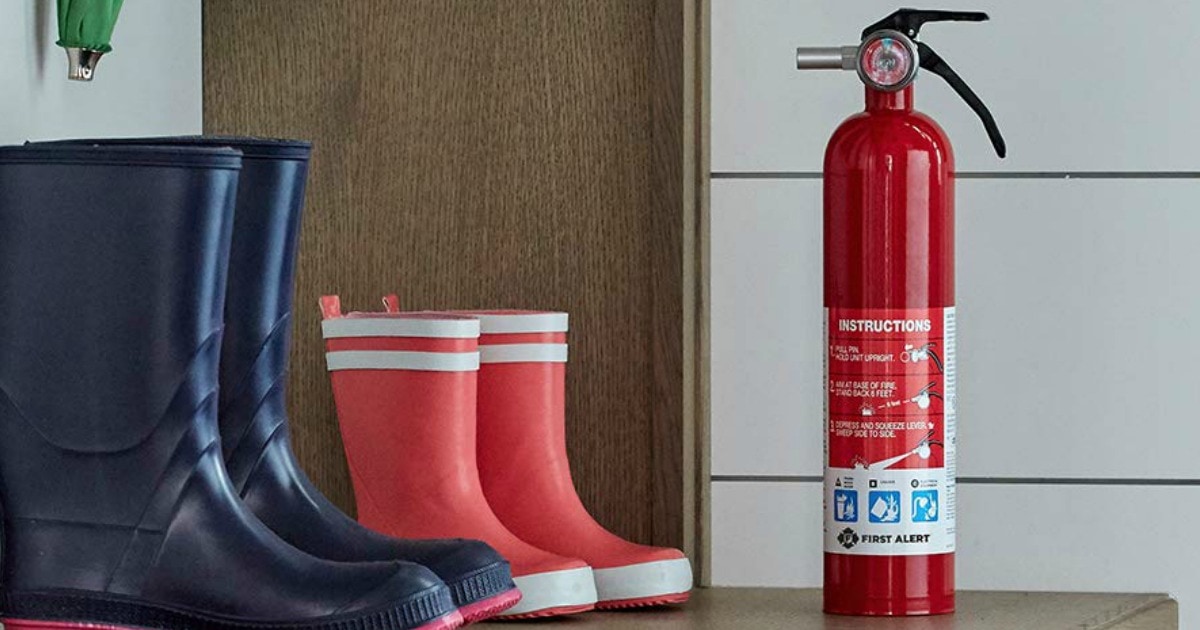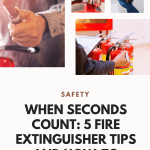A fire extinguisher is one of the most important tools you could have in your home to save life and property in the event of a fire. It can be used to put out small fires or hold back flames until you are able to escape the area of the fire and call the fire department. Knowing how to properly use a handheld extinguisher is essential for any household. Before attempting to use one, it is important to familiarize yourself with how one functions, the types of fires it can be used on, and the proper techniques for using it on those types of fires.
In this blog post, we will discuss the basics of using handheld extinguishers, including how to use, select, and maintain them. We will also discuss the different types of fires and the right extinguisher for each. So, make sure those seconds count and get up to speed on using your home handheld extinguisher.
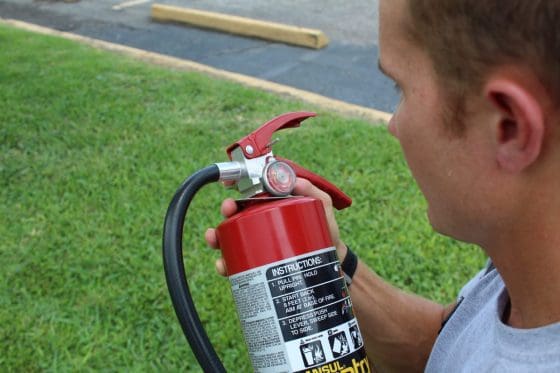
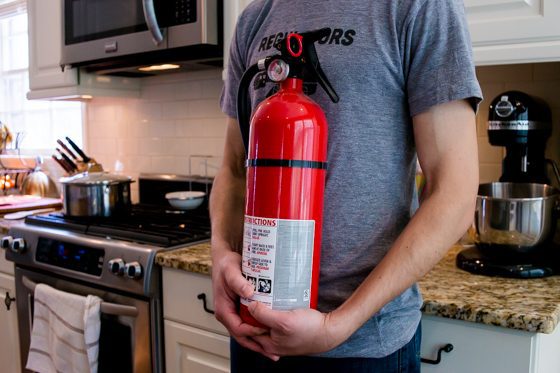
Fires cause more deaths than all natural disasters combined. The National Fire Safety Council reports that 81% of fire-related deaths occur in people’s homes. A fire can double in size in a matter of minutes, so it is crucial that you are familiar with the process of how to properly operate a home fire extinguisher.
The Fire Department still plays a crucial role, as a fire can reignite or extend into the walls where you can’t see it. Firefighters will be able to ensure the fire is properly extinguished, as well as check for an extension to prevent the fire from spreading to other areas of the house. And while the Fire Department should always be notified of a fire, even if you are able to successfully extinguish the fire on your own, you can get a head start on keeping it at bay before they arrive. So it’s important to have multiple extinguishers in your home at all times.
READ MORE: Fire Prevention Checklist for Every Room in Your Home
The Various Fire Extinguisher Types
There are several types of fire extinguishers available, each containing contents that are specific to the type of fire and circumstances that are presented. Using the wrong extinguisher could be a deadly mistake so make sure you purchase the correct one.
- Class A Fire Extinguisher: Ordinary Combustibles (wood, rubber, cloth, paper, trash, plastic)
- Class B Extinguisher: Flammable Liquids and Gases (grease, gasoline, oil, oil-based paints, propane, butane)
- Class C Fire Extinguisher: Live Electrical Equipment (wiring, fuse boxes, circuit breakers, machinery, plugged-in appliances)
- Class D Fire Extinguisher: Flammable Metals (industrial metal, metal dust)
- Class K Extinguisher: Cooking (oils, greases, vegetable oils, animal oils)
- Class A B C Fire Extinguisher: Multi-purpose (use on all types of A, B, or C fires)
The National Fire Protection Association recommends selecting a multi-purpose extinguisher to be kept in your home. A positive feature of the multi-purpose extinguisher is its size. It is large enough to put out a small fire, but not so heavy that it is difficult to handle.
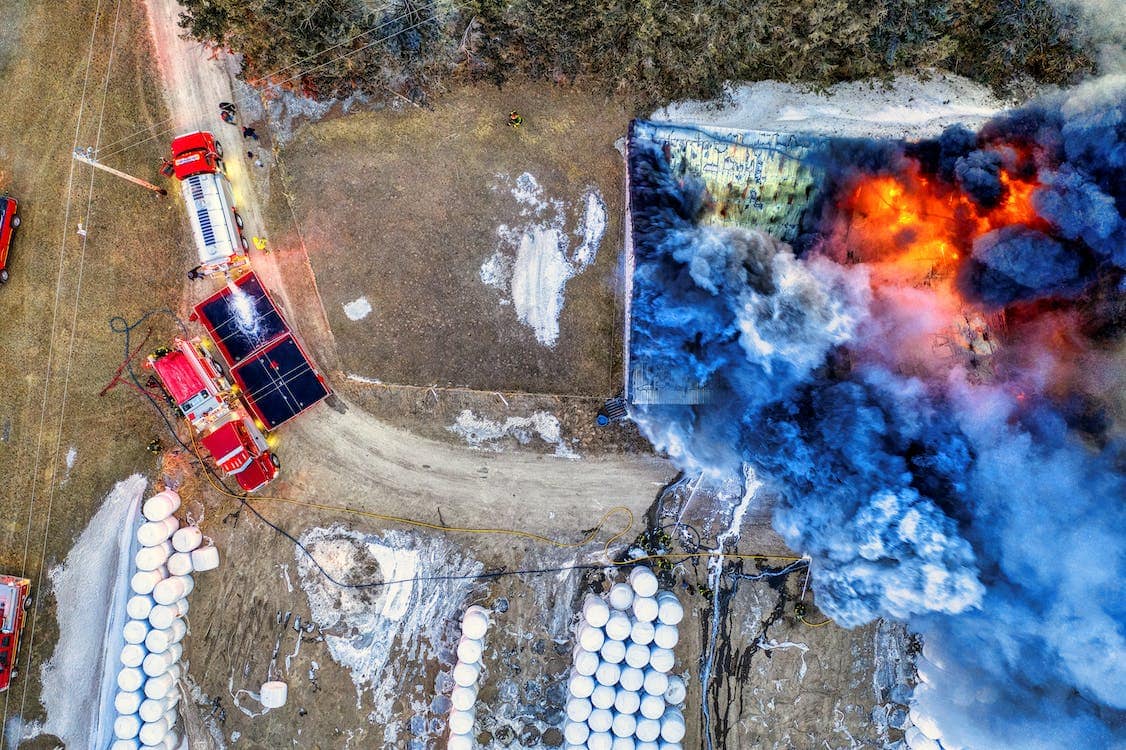
What Size Extinguisher Should You Get
When selecting what size home extinguisher to get, bigger is better. However, lifting a large, heavy extinguisher may be challenging for elderly people, disabled persons, and children. For those who are not able to lift a large extinguisher, consider getting one that is a manageable weight and size. When purchasing an extinguisher for your home, a good size rule of thumb to follow is:
- 10+ pounds: Commercial Businesses
- 10 pounds: Garages and Home Workshops
- 5 pounds: Kitchens and Laundry Rooms
- 2 pounds: Cars or Boats
Finding one is as easy as walking into your local hardware or big box store. You can buy household handheld extinguishers on Amazon.com, or at the local Home Depot, Lowes, Walmart, or Target. There’s no excuse for not having at least one extinguisher at home so grab one today.
READ MORE: 9 Summer Bicycle Safety Tips for Kids with Guardian Bikes
Where to Store Your Home Extinguisher
Having an extinguisher that isn’t in the right place can lead to delays in combating fires and make them more dangerous. Keeping an extinguisher accessible ensures that homeowners have the best chance of containing a blaze before it becomes uncontrollable; this can save lives, property, and money. Storing handheld extinguishers correctly means keeping them where fires are most likely to start, such as near kitchen areas and any appliances with open flames. It should also be placed out of direct sunlight, away from heat sources or any water that could freeze around it.
Some common rules to follow when finding a home for your extinguisher are:
- Placing near an exit
- In an easy-to-grab spot
- In an easy-to-see location (not blocked by curtains or doors)
- Not higher than 5 feet from the floor
- Out of reach of children
- Away from stoves and heat sources
- On every level of your home (if you have a multi-story home)
- Never in a closet
- In a garage or workshop
- In or near the kitchen
READ MORE: This Year’s Must-Have Baby Items: The Ultimate 2021 Baby Safety Guide
When Is It Time to Use The Extinguisher?
- If everyone in the home has been notified there is a fire
- If everyone has exited the home
- If the Fire Department has been called
- If the fire is small and contained to one area
- If the fire is not spreading
- If you have access to an escape route in case the fire escalates
- If the fire is not producing toxic smoke
- If you have the correct class of extinguisher for the fire that is present
- If you know how to operate an extinguisher
- If you feel safe enough to use an extinguisher

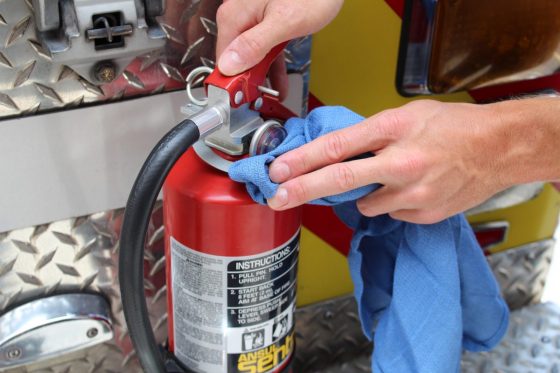
Inspecting Your Extinguisher
To inspect your home extinguisher, follow the manufacturer’s instructions. Depending on the type of extinguisher you have, it may have different operating procedures. Extinguishers for the home should be inspected once a month to ensure it’s ready in the event of a fire.
- Make sure that the extinguisher is in the proper place in your home.
- Make sure that it is still visible and that nothing has been placed in front of it to block it from view or use.
- Check the gauge to make sure the pressure is properly charged. The indicator located at the top of the extinguisher will indicate if it is fully charged or not.
- If you have a commercial extinguisher, an inspection should be conducted by a professional. They will tag the extinguisher to show that it has been inspected and indicate when it needs to be inspected again.
READ MORE: 25 Products You Need for a Cozy, Outdoor Bonfire Night
Maintaining Your Home Extinguisher
- Check that all parts are working and intact. This includes making sure that the hose and nozzle are free of insects that may have crawled inside or debris. Also, look for any dents or damage that may have been caused to the extinguisher.
- Keep the outside clean. Wipe off any oil, grease, or dust that may accumulate over time. In addition, check for any rusting that may occur. Dirt may cause the parts on the extinguisher to no longer work.
- Shake the handheld extinguisher once a month. The dry chemical powder inside the extinguisher may settle over time, so it is recommended that it is shaken to keep the powder efficient.
- Pressure test the extinguisher annually. This involves removing the pin and giving a light squeeze to the trigger to make sure that the contents still expel.
- Replace the extinguisher if it is empty or damaged. If the extinguisher has been previously used, it is strongly recommended that it is refilled or replaced immediately. The extinguisher should also be taken to a qualified technician to repair any damage caused to the extinguisher.
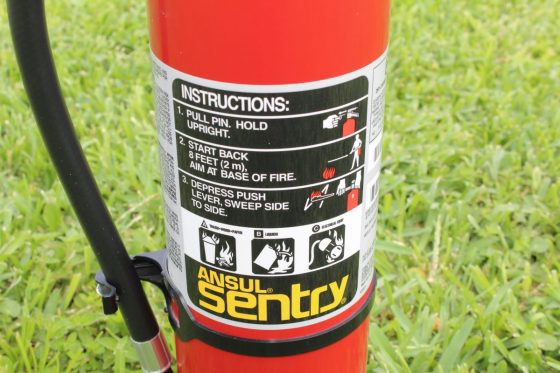
How to Use a Fire Extinguisher
Using a handheld extinguisher requires a four-step process. To remember these four steps, use the acronym PASS. Most extinguishers have instructions printed directly on them.
- Pull – Pull the pin to unlock the extinguisher.
- Aim – Aim at the base of the fire, standing 6-10 feet away.
- Squeeze – Squeeze the trigger slowly to discharge the contents.
- Sweep – Sweep the Spray from left to right until the flames are totally extinguished.

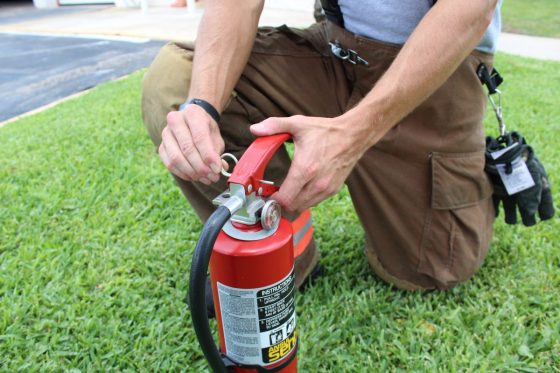
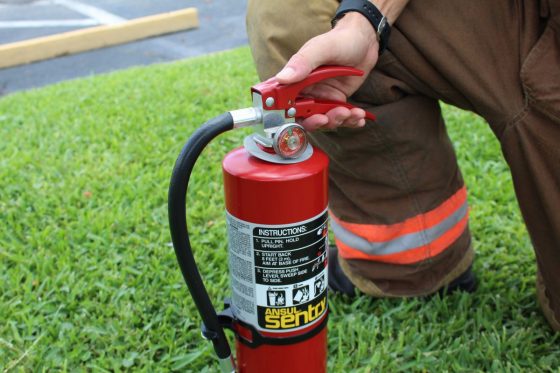
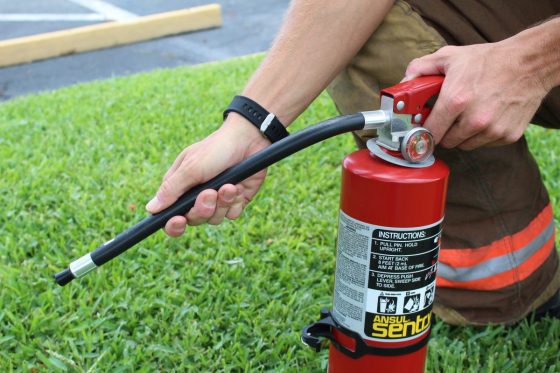
READ MORE: How to Recover After the Disaster of a House Fire
Releasing the lever will make the spraying stop. Repeat if necessary by squeezing the lever again. Even if the flames appear to be out, do not walk near the area you extinguished to prevent inhaling the chemical agent. Remember: although you may have successfully extinguished the fire yourself, it is important to always have the Fire Department respond to check the area.
Knowing how to properly use a handheld extinguisher is an essential skill that can save lives and prevent extensive property damage. By selecting the appropriate extinguisher, individuals can effectively combat small fires before they escalate into uncontrollable emergencies. Remember, fire safety is everyone’s responsibility, so take the time to educate yourself on the basics of using, selecting, and maintaining handheld extinguishers. Together, we can make a difference in keeping our homes and workplaces safe from the threat of fire.
CONNECT WITH DAILY MOM
💖 NEWSLETTER: DAILY READS IN YOUR INBOX 💖
Sign up to receive our picks for the best things to do, see and buy so you can relax and focus on more important tasks! Let us help you be the best version of yourself you can be!
BE SOCIAL WITH US
📌 LOVE IT? PIN IT!📌



































